The Special CBI Court at Lucknow acquitted all 32 persons accused of hatching the criminal conspiracy which resulted in the demolition of the Babri Masjid on 6th December, 1992. The court reasoned that it was not pre-meditated, and that there was no criminal conspiracy behind it. The judge also raised concerns around the authenticity of the audio and video clips produced by the CBI.
This finding of “no conspiracy” behind the demolition, of course, is the official line of the Sangh Parivar; they referred to the demolition as a spontaneous act of unknown people. The Sangh Parivar succeeded in getting judicial imprimatur to this theory when the Special Court in 2001 dropped proceedings against those charged with conspiracy. When the matter was challenged in the High Court they also concurred with the conclusion of the trial court in 2010.
Witness testimony & photographs of the day before the demolition and its preperations
Supreme Court Orders on Babri Masjid Demolition Conspiracy:

However, it is important to note that the Supreme Court itself has implicitly distanced itself from this theory of “spontaneity”. In CBI v Kalyan Singh, Justices Nariman and Pinaki Chandra Ghose in 2017 restored conspiracy as a charge and directed the Sessions Court to complete the trial in two years. As the Supreme Court observed, “in the present case, crimes which shake the secular fabric of the Constitution have allegedly been committed almost 25 years ago. The accused persons have not been brought to book largely because of the conduct of the CBI….”
The Supreme Court recorded its order to the Special Judge Lucknow in 2001:
“As far as question of conspiracy, u/s120-B of IPC is concerned, connection is not necessary to have proved evidence because a conspiracy is hatched in secrecy and the knowledge of this conspiracy comes to the remaining accused gradually, slowly and this knowledge is discernible from what becomes clear by their speeches and by actions done by them.” The Supreme Court goes on to record why Kalyan Singh, Lal Krishna Advani and the others should be charged with the conspiracy to demolish the Babri Masjid.
By explicitly overruling the High Court judgment and restoring the charge of conspiracy, the Supreme Court indicates that prima facie there is credence to the theory that there was premeditation and planning underlying the demolition, and that it was not an act of spontaneous violence.

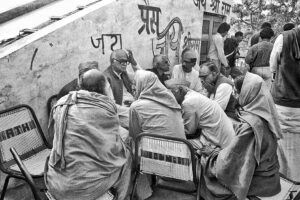
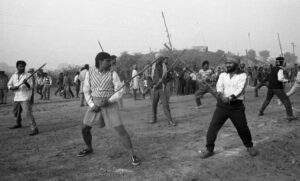
The Liberhan Commission gives further judicial heft to the idea that the demolition was not the result of ‘spontaneous action’, and that underlying the demolition was the work of the organisations of the Hindu Right. Justice Liberhan observes:
“these organisations are collectively an immense and awesome entity with a shrewd brain, a wide encompassing sweep and the crushing strength of the mob. The leadership provided by the RSS, BJP, VHP and the other mutating and constantly transforming organisations like the Hindu Mahasabha and the Jan Sangh, in furtherance of the suspect theories of the founders of these organisations was consistent and unabashed. The ends are all that matter to the core group of thinkers and the destruction of the disputed structure was only one victorious battle in their ongoing campaign against secularism and the multicultural society, clothed in the garb of religion.’
The Special CBI Court by its finding that there was no conspiracy to demolish the Babri Masjid is selectively reading the voluminous evidence before it and coming to a conclusion at odds with reason, history, as well as the implicit directive of the Supreme Court. By finding that there was no conspiracy, the Special CBI Court has done a grave injustice to facts, truth as well as justice.
Can justice still be delivered in the Babri Masjid Demolition Case?
It is clear that there is sufficient warrant to file an appeal against this judgment and the CBI should forthwith file an appeal. All those concerned with the fundamental principle of a “rule of law” society- where there should be no impunity for crimes committed- should press for an appeal to be filed.
Undoubtedly, while the verdict is a serious blow to the credibility of India being a rule of law society, we should not forget that the only reason conspiracy was restored as a charge was because of the intervention of the Supreme Court in 2017. The fact that the judgment was finally delivered in less than three years after the Supreme Court directive after delaying for over twenty five years also indicates that a turn around is possible.
What is required is an appellate court judge who is not afraid to weigh the evidence fairly and give a judgment on merits, even if it goes against the prevailing political winds. Such people, though rare, are not impossible to find in the Indian legal system.

One example which comes to mind is Justice Jyotsna Yagnik who delivered the momentous judgment in the Naroda Patiya case. She tried the violence in Naroda Patiya on February 28, 2002 during the Gujarat pogrom. In Naroda Patiya, the planned violence resulted in the death of 96 Muslims, serious injuries to over 124 Muslims and the rape of Muslim women. In this case, Justice Yagnik, when Narendra Modi was the Chief Minister of Gujarat, came to the courageous finding that 32 people were part of this conspiracy. This included the former Minister, Mayabhen Kodnani. All were sentenced to imprisonment.
Taking a lesson from holocaust surviver and philosopher, Hannah Arendt, we have to invest our faith in humanity and not the utter impossibility of terrorising all people into submission and converting them into committed ideologues. As Arendt argues, “under conditions of terror most people will comply but some people will not, just as the lesson of the countries to which the Final Solution was proposed is that “it could happen” in most places but it did not happen everywhere.”
Our struggle to defend the Constitution has to continue with the faith that the Indian judicial system, against all odds will continue to throw up judges like Justice Yagnik. Such judges would stick to their oath to “bear true faith and allegiance to the Constitution of India” and keep up the struggle for justice.
The author is a constitutional expert and co-founder of the Alternative Law Forum.


















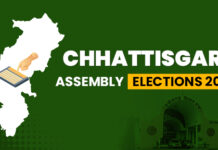






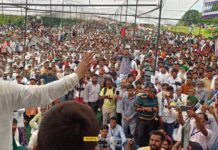
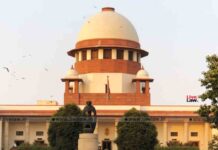


[…] Also read: Babri Masjid Case: Special CBI court did not follow Supreme Court Orders […]
[…] Also read: Babri Masjid Case: Special CBI court did not follow Supreme Court Orders […]
[…] Also read: Babri Masjid Case: Special CBI court did not follow Supreme Court Orders […]